I got an email early today from Toki, who’s been rather quiet lately (note: and as I just noticed right now on his blog, whose grandmother has just passed away…). He asked me if I have tried a water called 5100. I haven’t, so I prompted went out and got a bottle.
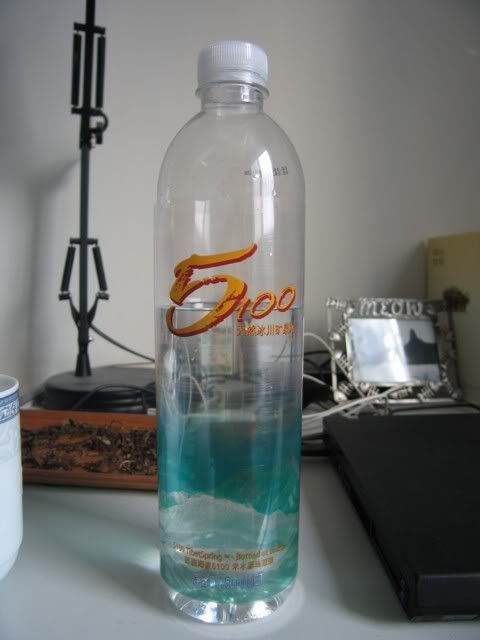
This is a pretty expensive water for Chinese standards, with this particular one costing about 1 USD for 750ml of Tibetan water. It’s piped from some spring at 5100m elevation, and supposedly glacial in origin. It boasts boatloads of minerals, among which are Lithium and Strontium, which I’m not sure is actually good for human consumption in large quantities. Anybody knows?
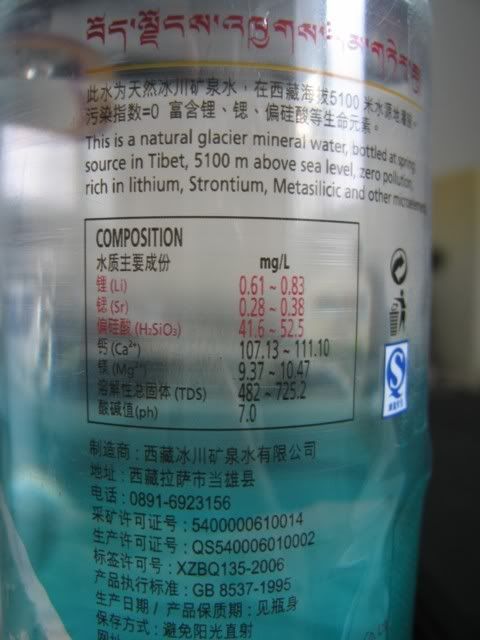
Since I’ve already said yesterday that I’m going to brew some Yunnan Red (aka Black) Tea, I did. This is a tea that my girlfriend brought me from New York, from a place that sells both tea and coffee. The tea is basically a typical Yunnan hongcha, nothing fancy, and not of the “Golden Yunnan” variety where all the leaves are golden buds. Instead, it’s mostly broken leaves with bits of golden buds mixed in.
I wanted to test the new water I got today, so I brewed this tea using the two small gaiwans I have, putting in a small amount of leaves in each, eyeballing them to about the same level (damn the broken scale). One is to be just the 5100 water, and the other is my regular supply — Nestle water from the Shanghai plant.
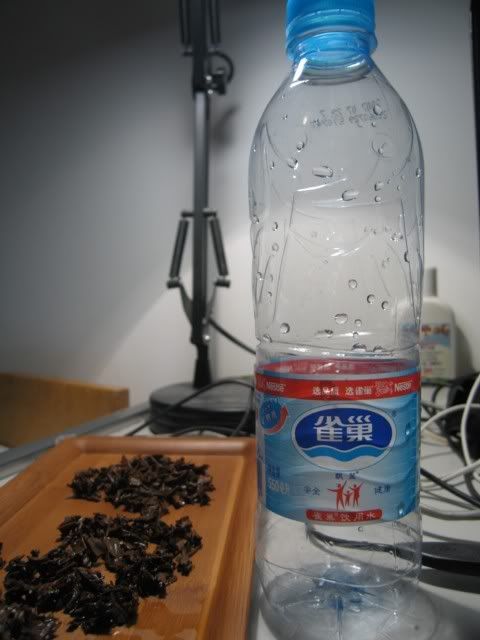
I didn’t bother washing the leaves. Since the amount of leaves I used was small, I brewed each infusion with about one minute steeping time each. Let me show you the first one
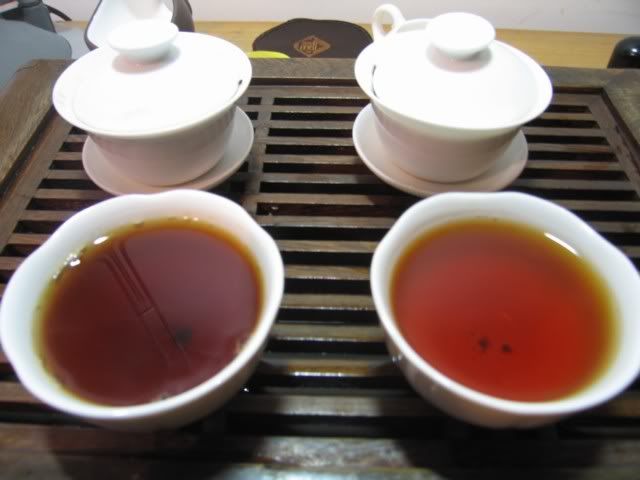
Hmmm….
That’s a big difference in colour, and trust me, even though I think I added slightly more leaves to the gaiwan on the left, it was by no means a huge difference.
As you have probably guessed, the left gaiwan used 5100 water, and the right used my Nestle water. They definitely LOOK different. I mean… it’s night and day.
Thinking it might have to do with the slightly different levels of leaves, I reversed the water for the two gaiwans for the second infusion
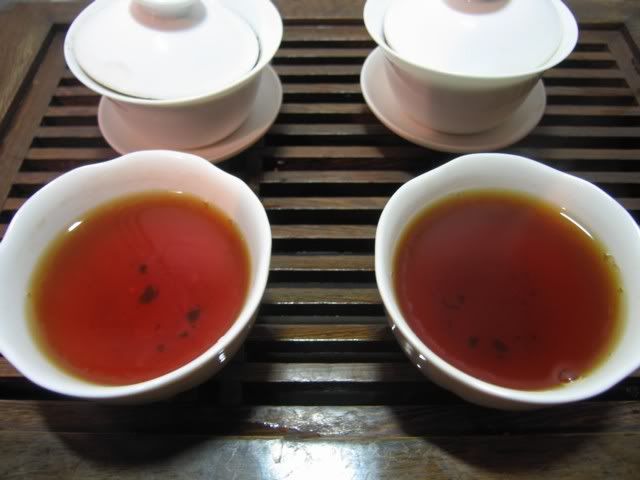
And got the reserve result. This is not an illusion.
So far I’ve only been talking about the look of the tea. How did it taste? Well, the tastes are definitely different, although the true test would be if I were able to taste them blindfolded, not knowing which one I were drinking. The tea brewed with 5100 water tastes a little heavier, whereas the one with Nestle water tastes crispy. I’m not sure what the best way to describe this is, but the 5100 water gives the tea a slightly more intense and deep flavour, as if it had condensed something from the leaves, while the Nestle water just skimmed the surface, but the aroma from the Nestle water was more apparent, “higher” in Chinese terms, and just lighter in general. There was a slight hint of sourness in the Nestle water sample on the second infusion that I didn’t detect in the 5100 sample. The mouthfeel of the 5100 samples were obvious a little softer as well, but not definitively so. Again, it would be more convincing if I couldn’t see which cup I was drinking from.
I switched the teas back to their original waters
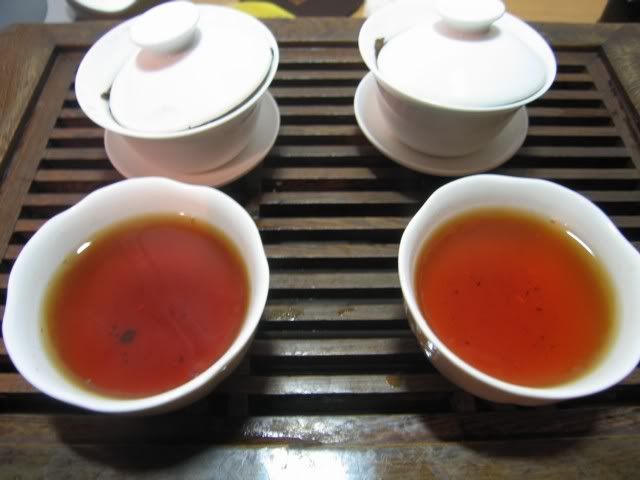
And a final, long steep, with the left now being a mix of 5100 and Nestle water, and the right only of Nestle water
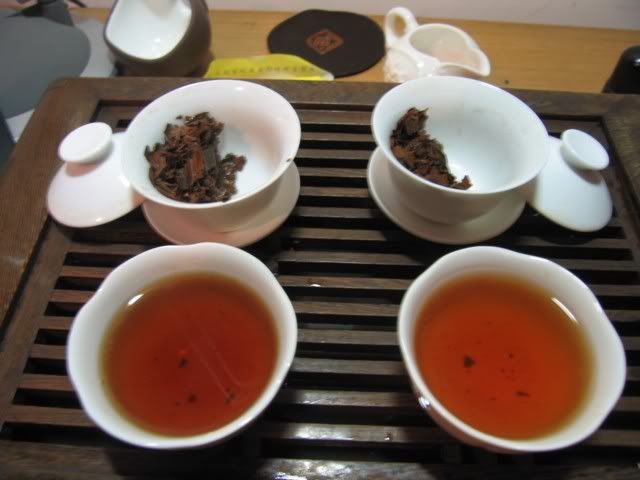
Meanwhile… I consumed some snacks, which I don’t mind doing when I’m drinking red (black) tea. In case you’ve never seen them… these are egg tarts, “Portugese style”, but really from Macau as far as I’m aware. The ones that look burnt have caramel added to the custard mix, whereas the ones that aren’t burnt do not have the custard and are therefore a little less sweet and a little less creamy.
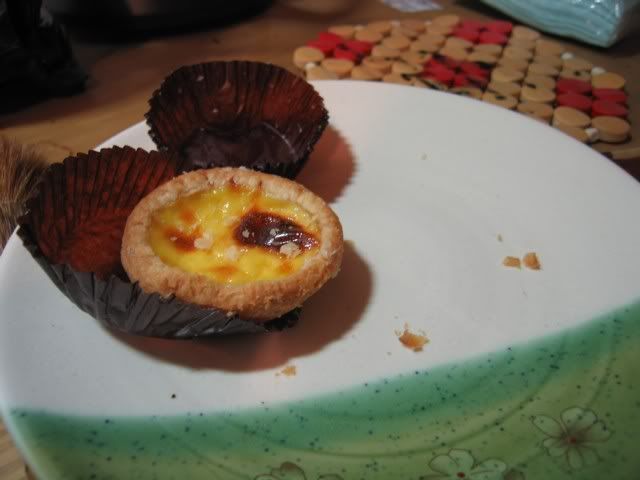
One interesting thing about the 5100 water, which I’ve noticed with Evian as well, is that they leave sediments behind when boiled. Notice the white deposits….
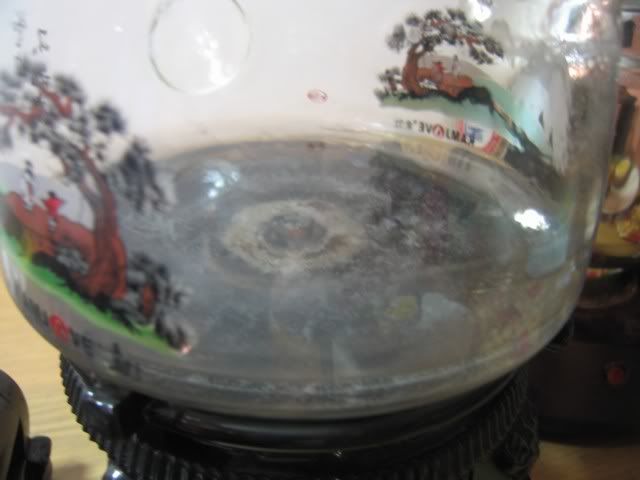
It will be interesting to see how this water changes the way certain other teas taste, stuff I’m perhaps more familiar with. I’m wondering what to try next with this. Perhaps the Best Tea House “30 years” loose puerh will be a good candidate for the same treatment, or maybe some Wuyi tea. I don’t think I’ll want to use only 5100 for brewing, for a few reasons. Cleanup is definitely one, since I think the amount of deposits in the kettle is quite high, and although I know I would be gulping down all of this if I were to drink the unboiled version of this water, it’s still a bit… jarring. Also, it’s not cheap…. and I don’t think the way it changes the tea is entirely positive. That is, I don’t think one can say with no reservations that this water makes today’s dianhong better in every way. It was different, that’s for sure, but I couldn’t say I liked it more, necessarily. I think it was interesting to see the difference though.
What’s a day’s drinking without a shot of the wet leaves?
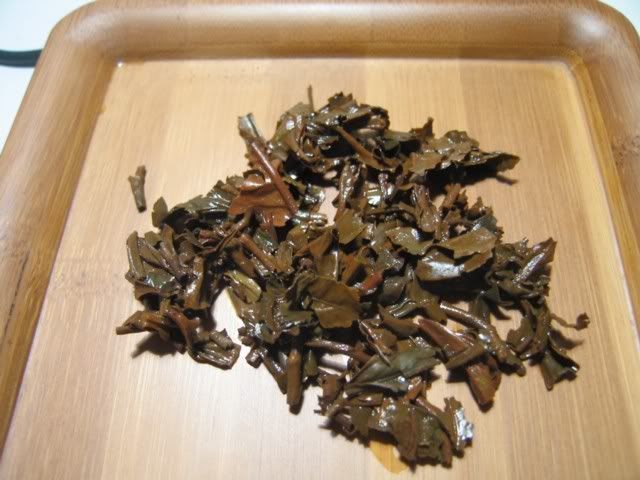


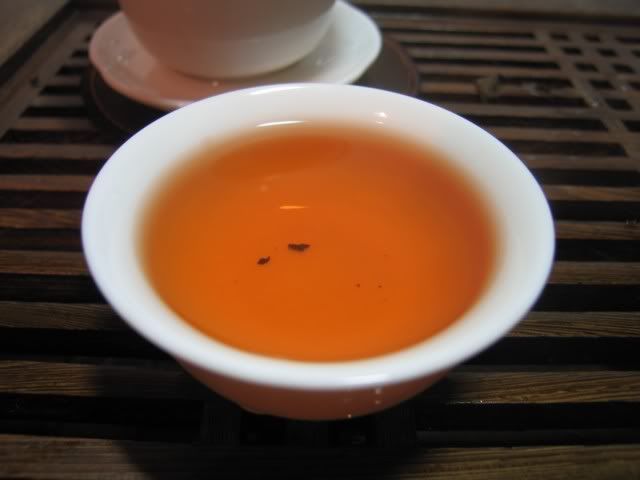
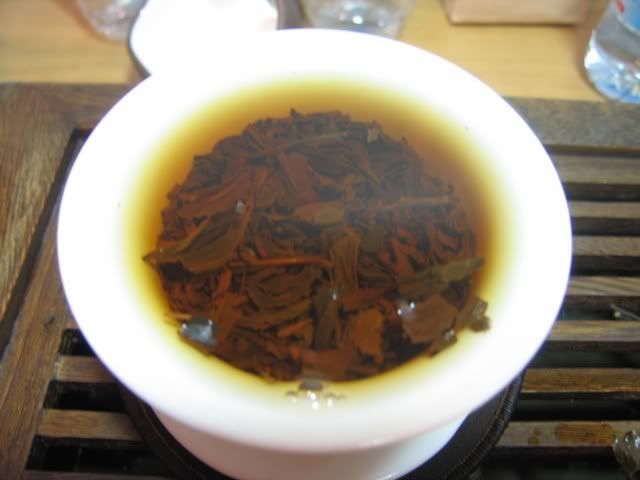
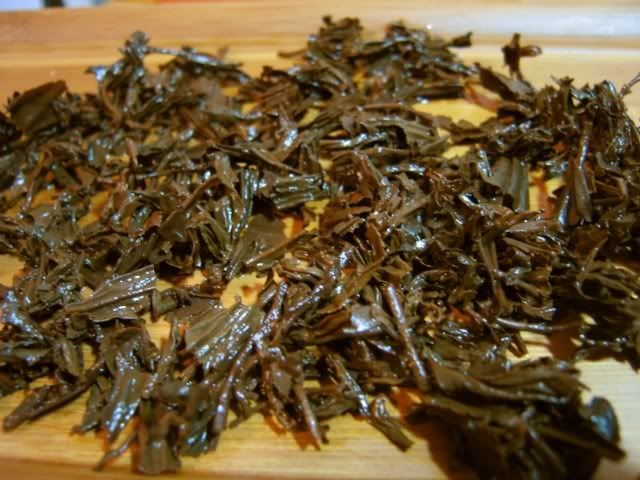
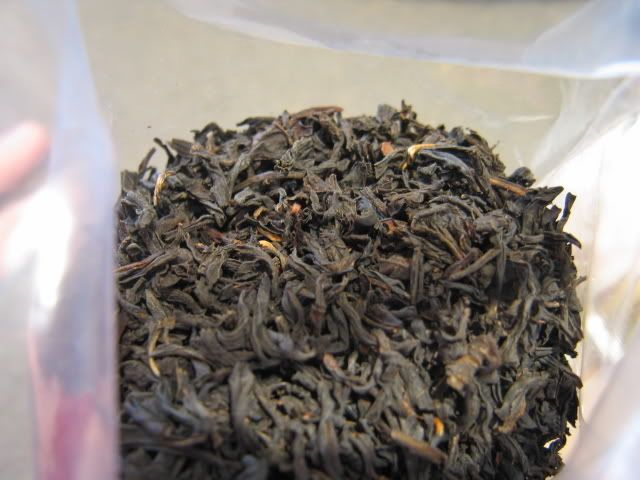
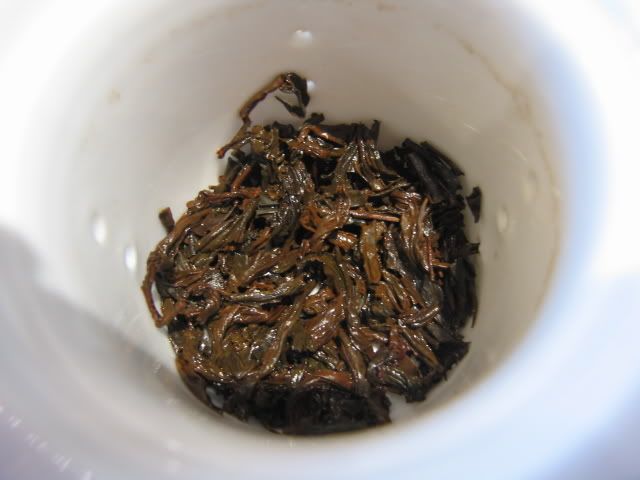
 RSS - Posts
RSS - Posts
I took you at your suggestion and have been reading some of your old post-Covid posts. I haven’t been to…